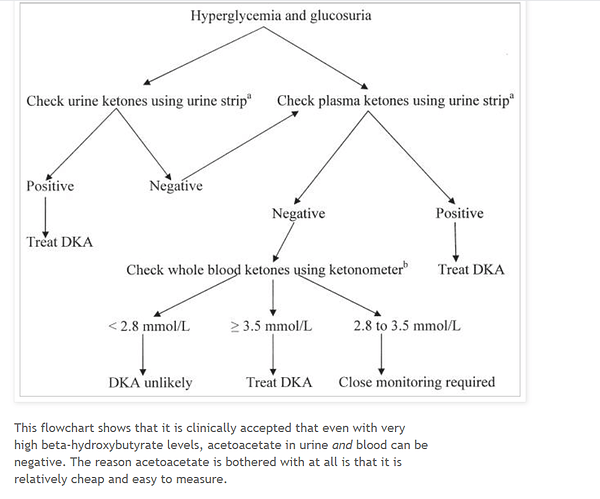Part I:
Keto-Adapted but No/Low Ketones
What do you all think of this article about meat and insulin?
For me, I have more questions after reading that than answers, especially since not all people get really low ketones.
Maybe our brains are making their own! Low/no ketones (as measured) is a topic of strong interest to me, and I will continue to investigate and post me findings here…
Taking carbs immediately before, or while running
Taking carbs immediately before, or while running
Ketone synthesis by astrocytes in the brain
So according to the chart I should treat for diabetic ketone-acidosis with ketones > 3.5??? No way.
Mine were 3.8 at 42 hours fasted and 5.8 at 62 hours fasted. Means nothing unless your glucose is also high, which mine wasn’t. Granted, my ketones are much lower when not fasting, but tha is not addressed.
Also, my body is very wasteful making extar ketones as I can still turn a pee stick pink with no fasting after 3-1/2 years of being keto.
What chart? Please cite/link so we know what exactly you’re talking about. Thanks.
The article you posted:
Screen shot from article (maybe I interpreted it wrong - reading while in an online meeting): The bottom concerning checking blood ketones using a meter.
Not sure why this is in the article since the title “keto-adapted” assumes a keto diet.
According to Dr. Phinney, and several sources I read on-line, the risk of diabetic ketoacidosis doesn’t even begin until serum β-hydroxybutyrate rises to 10.0, and symptoms don’t start until around 20.0. And as you say, in diabetic ketoacidosis, hyperglycaemia is also part of the diagnostic.
There is such a thing as euglycaemic ketoacidosis, but it is rare and occurs (if it does) only in certain known situations.
O’Hearn lifted that diagram from this animal study:
Introduction
Diabetic ketoacidosis (DKA) is a severe and life threatening metabolic disease caused by an absolute or relative deficiency of insulin in the body (1). A disease of middle-aged dogs and cats, DKA occurs as a complication of diabetes mellitus (1).
I have no idea why she used that particular diagram in her discussion of lo/no ketones in fat-adapted humans eating a nutritional ketogenic diet. I guess we’d have to ask her to find out. But as noted by @PaulL the numbers in that diagram are well within the healthy range of human ketosis.


